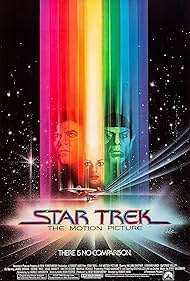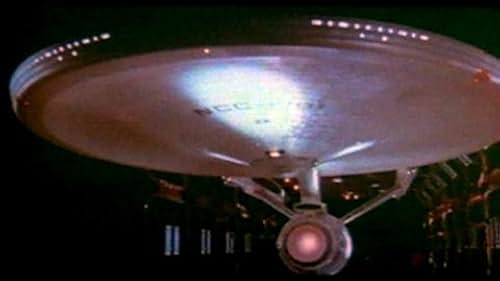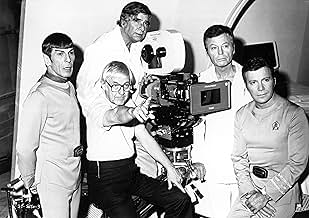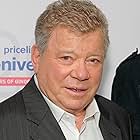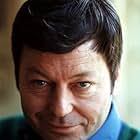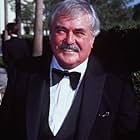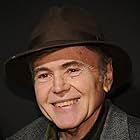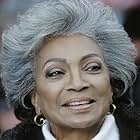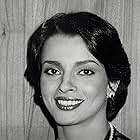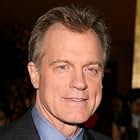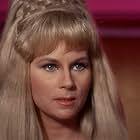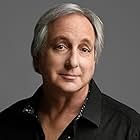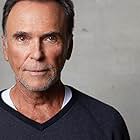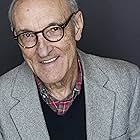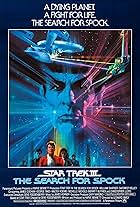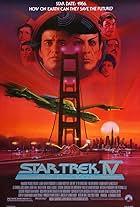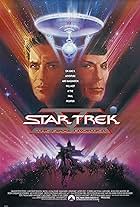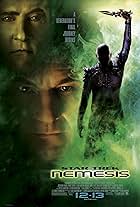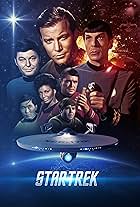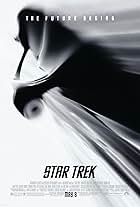When an alien spacecraft of enormous power is spotted approaching Earth, Admiral James T. Kirk resumes command of the overhauled USS Enterprise in order to intercept it.When an alien spacecraft of enormous power is spotted approaching Earth, Admiral James T. Kirk resumes command of the overhauled USS Enterprise in order to intercept it.When an alien spacecraft of enormous power is spotted approaching Earth, Admiral James T. Kirk resumes command of the overhauled USS Enterprise in order to intercept it.
- Nominated for 3 Oscars
- 4 wins & 21 nominations total
John Gowans
- Assistant to Rand
- (as John D. Gowans)
- Director
- Writers
- All cast & crew
- Production, box office & more at IMDbPro
Storyline
Did you know
- TriviaWhen Captain Kirk addresses the crew before launching, many of the extras were noted Star Trek fans, including Bjo Trimble, co-organizer of the letter-writing campaign that kept Star Trek (1966) alive for a third season.
- GoofsWhen flying past Jupiter, three consecutive shots of Jupiter and its moons are shown. The first and third are from the POV of the ship as it approaches and passes Jupiter, and show the sunshine on planet and several moons coming from the port aft. The second shot shows the opposite angle of the oncoming ship, and the sunshine on the planet and 4 moons is coming from a different direction on each body, none of them from the port aft.
- Crazy creditsEnd title: "The human adventure is just beginning."
- Alternate versionsOn November 6, 2001, the Director's Edition supervised by Robert Wise was released on DVD and widescreen VHS, running 136 minutes. The material added to the film consists of the following:
- The landscape of Vulcan was changed to include a yellowish sky and new landscape featuring massive statues. All other footage was tinted gold.
- The matte painting of the Golden Gate Bridge in the scene where Kirk arrives at Starfleet Headquarters was replaced by a new CGI scene that shows Kirk's shuttle arriving at Starfleet. It is actually slightly longer than the original version.
- The matte painting of Starfleet Command was improved with CGI effects, including an original series shuttle launched in the background.
- In a close-up shot when Kirk first sees the new Enterprise from his shuttle, the image of the ship was superimposed over Kirk's face as a reflection in the shuttle's window.
- After Kirk leaves the bridge, a short conversation between Sulu, Uhura and an alien officer was inserted.**
- A new CGI shot of the Earth is shown on the viewscreen when the Enterprise leaves the planet.
- A new CGI effect showing one of the Enterprise's nacelles was inserted into the window when Kirk, Spock and McCoy speak on the observation deck.
- A new CGI shot was inserted which shows V'Ger's second energy torpedo vanishing before it could strike the Enterprise.
- The energy probe that invades the bridge now approaches in a CGI exterior shot.
- A new CGI shot shows the V'Ger vessel entering Earth orbit.
- The scene in which Chekov burns his hand is much longer and shows Lt. Ilia healing him with her empathic powers instead of Nurse Chapel.**
- The long walk to V'Ger was totally redone. There is now a walkway that materializes out of thin air, compared to the endless field in the original version.
- The Enterprise's voyage to the center of V'Ger is slightly extended. It has a scene of Spock sharing a tear "for V'Ger" and Scotty ordered to self-destruct the ship if the landing party is unsuccessful.**
- The small black "empty matte" in the window when Decker and Ilia confront each other in the recreation deck was replaced with a CGI shot of the V'Ger cloud interior.
- The final explosion of V'Ger was slightly extended. The shot from the original version remained intact, but a new element of the vessel imploding its energy for the explosion was added.
- New opening titles were commissioned for the film's opening. The opening titles now have a slight fading effect and are now seen over a background of stars. The text is colored a bright gold, compared to the original version's white.
- The explosion in the wormhole was redone. There is now an exterior shot of the asteroid exploding and the wormhole disintegrating. Additionally, the viewfinder in the next shot is enhanced to show sparks and debris.
- The final message to the audience, "The human adventure is just beginning", was altered. In the original version, the starfield cuts away to a blank title card showing the text. In the Director's Edition, the starfield was extended by a few seconds to allow the text, colored bright gold, to fade into the picture.
- The ending credits were slightly altered. The text, as with the opening titles and the final "human adventure" text, was changed color, from white to a bright gold. Additionally, the music was slightly extended to add new Director's Edition credits.
- An all-new sound mix was commissioned, keeping the music and dialog intact, and adding new effects for almost all scenes. For example, the Enterprise computer voice alarms are now replaced with klaxon sirens, the lightning effects have new echoes, and a blend of Enterprise bridge sound effects from the original Star Trek series, Star Trek II: The Wrath of Khan, and Star Trek VI: The Undiscovered Country have been added into the background of scenes taking place on the bridge. The new mix is in Dolby 5.1 EX Surround.
- The footage from 1979 was digitally restored and remastered, and combined with the new CGI elements.
- The opening overture has been restored to its full length. It is also played over a CGI starfield, rather than the blank screen in the original version.
- A slight dialog alteration was made: In the 1979 and 1983 versions, the V'Ger cloud is said to be "over 82 AUs in diameter" which equals 7.626 billion miles across - much too large for the Enterprise to realistically travel to the heart of the cloud at subwarp speeds within a reasonable length of time. For the Director's Edition, the Epsilon 9 commander's dialog was altered so that the cloud is now said to be a (somewhat) more reasonable "over 2 AUs", or 186 million miles.
- The producers of the Director's Edition submitted the film for re-rating by the MPAA, hoping for a PG rating rather than the original G rating which they believed carried a negative association; the basis for the higher rating was the intensified soundtrack. Oddly, when the original theatrical version was released on DVD and Blu-ray in 2009, it carried no MPAA rating.
- Scenes previously available in the "special longer version."
- ConnectionsEdited into Star Trek II: The Wrath of Khan (1982)
- SoundtracksTheme from 'Star Trek: The television Series'
Written by Alexander Courage and Gene Roddenberry
Featured review
This was an under-rated film in the first version, and it is improved a great deal with the changes that Robert Wise made just a few years before he passed away. There has been a backlash against this picture, mostly for two reasons; it was not Star Wars, and it was not what people expected of Star Trek.
If you put these expectations aside, and if you also have some attention span and willingness to relax into a picture this is a remarkable experience. I often here people use words like boring, too long etc. Well yes, if we are expecting a quick-hit, film that can be digested in 90 minutes like a TV show, this is not that type of film. If we apply these standards to Lawrence of Arabia, 2001, Blade Runner, Bridge on the River Kwai, or Citzen Kane (which Robert Wise edited, none of these films would have ever been made.
If you put Star Trek The Motion Picture in context of it's scale and the craftsman involved you start to appreciate it's quality and elegance. Robert Wise does not need qualification. He brings an elegance and texture to work and life in space that StarWars has not put to screen to this day.
Star Wars even now seems like nothing more than an impressive exercise in effects and sound. It is always reminding us that it is a movie. ST-TMP on other hand departed into an "immersive experience" developed by Robert Wise, with the amazing talents of Doug Trumbull and John Dykstra, and the enormous contibutions of Jerry Goldsmith. Likewise, the photography, the scale of the sets and the editing of the film all contribute to a immersive world that saturates the viewer into the film.
You gain a lot of knowledge and appreciation of this film and the experience that they achieved by watching the Director's Edition DVD and listening to Wise, Trumbull, Dykstra, Goldsmith and others discuss the production. This was a uniquely creative and enormous effort, and considering the technological limitations, the demands of the studio, and the many demands of the Star Trek Bible that qualified the creation of the movie. I am pleased to see that other reviewers here have come to appreicate this movie many years later. I encourage the skeptics to find the time to relax and watch it on the biggest screen you can find.
If you put these expectations aside, and if you also have some attention span and willingness to relax into a picture this is a remarkable experience. I often here people use words like boring, too long etc. Well yes, if we are expecting a quick-hit, film that can be digested in 90 minutes like a TV show, this is not that type of film. If we apply these standards to Lawrence of Arabia, 2001, Blade Runner, Bridge on the River Kwai, or Citzen Kane (which Robert Wise edited, none of these films would have ever been made.
If you put Star Trek The Motion Picture in context of it's scale and the craftsman involved you start to appreciate it's quality and elegance. Robert Wise does not need qualification. He brings an elegance and texture to work and life in space that StarWars has not put to screen to this day.
Star Wars even now seems like nothing more than an impressive exercise in effects and sound. It is always reminding us that it is a movie. ST-TMP on other hand departed into an "immersive experience" developed by Robert Wise, with the amazing talents of Doug Trumbull and John Dykstra, and the enormous contibutions of Jerry Goldsmith. Likewise, the photography, the scale of the sets and the editing of the film all contribute to a immersive world that saturates the viewer into the film.
You gain a lot of knowledge and appreciation of this film and the experience that they achieved by watching the Director's Edition DVD and listening to Wise, Trumbull, Dykstra, Goldsmith and others discuss the production. This was a uniquely creative and enormous effort, and considering the technological limitations, the demands of the studio, and the many demands of the Star Trek Bible that qualified the creation of the movie. I am pleased to see that other reviewers here have come to appreicate this movie many years later. I encourage the skeptics to find the time to relax and watch it on the biggest screen you can find.
Details
- Release date
- Country of origin
- Official site
- Languages
- Also known as
- Viaje a las estrellas
- Filming locations
- Yellowstone National Park, Wyoming, USA(portions of planet Vulcan sequence filmed at Minerva Terrace)
- Production companies
- See more company credits at IMDbPro
Box office
- Budget
- $35,000,000 (estimated)
- Gross US & Canada
- $82,604,699
- Opening weekend US & Canada
- $11,926,421
- Dec 9, 1979
- Gross worldwide
- $82,676,805
- Runtime2 hours 23 minutes
- Color
- Sound mix
- Aspect ratio
- 2.39 : 1
Contribute to this page
Suggest an edit or add missing content

Top Gap
By what name was Star Trek: The Motion Picture (1979) officially released in India in English?
Answer